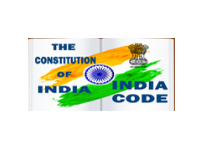Other Recommendations relating to performance appraisal
5.1 In this chapter we take up some of the other weaknesses and issues that were identified in Chapter 3 and suggest options for those that have not been dealt with elsewhere in the report.
5.2 Better monitoring and scrutiny through computerization
5.2.1 As stated earlier, delays in recording appraisal reports is a major weakness in the current system. From the feedback received, the Group concluded that the delays take place on account of one or more of the following reasons:
- Low priority is accorded to recording the appraisal reports, as there is no visible pinch for delays. Even a system of gentle reminders does not exist except when an appraisee is due for promotion and such promotion gets held up for want of his annual report.
- Filling up the appraisal form is complex and officers tend to delay this in order to avoid a difficult task.
- Sometimes appraisees seek to avoid having their reports written by a (particular) superior on account of an apprehension that the report would not be good enough. In some cases, the ACR form is submitted to an officer, who, while higher in the hierarchy than the appraisee, is not in fact the actual reporting officer. There is no systematic means of monitoring such practices.
- Some superiors being unhappy with certain subordinates tend to delay writing reports as a means of harassment. This is often resorted to as a substitute for giving adverse entries in order to avoid the hassles of having to subsequently justify the adverse remarks.
5.2.2 These problems may be resolved if an effective system of monitoring the receipt of performance appraisal reports is put in place and, at least, a reminder is issued wherever there is a delay. Such reports would convey a signal that someone at a higher level is monitoring the timely recording of performance appraisal reports and repeated delays may adversely impact those responsible for the delay.
5.2.3 In order to have such an effective system of monitoring, it is, first of all, important to assign overall responsibility for monitoring and maintenance of the performance appraisal dossiers to one agency. It is recommended that the monitoring function be assigned to the respective cadre controlling authority. In respect of the All India Services this may be assigned to the cadre controlling authority in the Central Government, who, in turn, would work through the cadre controlling departments in the State Governments.
5.2.4 The agency assigned the responsibility of monitoring the timely writing of annual performance reports should then put in place a computerized system for more effective monitoring.
5.2.5 Computerization would be useful for the following purposes:
- Monitoring the timely writing of the appraisal report by the appropriate Reporting and Reviewing Officers.
- Facilitating the development of a master data sheet (MDS) which could be used by the committees/authorities concerned in the various personnel actions, including promotions, selection for particular positions, selection for training programs, etc.
- Providing assistance to promotion/empanelment committees in accounting for systematic variations in grading standards across different State cadres of the same service, and identifying inconsistencies between overall grades and grades for individual attributes.
- Aggregating ordinal numerical scores on the basis of frequency distribution or fuzzy set analysis.
- For drawing panels/shortlist of officers for specific assignment/training programmes.
- Maintaining an effective data base of officers, that may be tapped for various other purposes.
5.2.6 With regard to the problems in filling up a complex form, it would be best if the parts relating to the Reporting and Reviewing Officers are simplified. The Group has kept this in mind in redesigning the proforma. Further, the entire form should be available as a computer file, both for ease of filling in, and to facilitate electronic record keeping.
5.3 Staggering cut-off dates
5.3.1 Another useful method of ensuring that the reports are written in time is to provide for higher levels to certify that they have initiated the reports in respect of their subordinates for whom they are the Reporting Officers, while submitting their self-appraisals. To facilitate this the Group is of the view that staggering the cut off dates for report writing at different levels should be introduced. The period of report could remain the same, i.e., 1st April to 31st March. Only the cut-off dates by which the different stages of the performance appraisal system should be completed could be staggered. A calendar of the cut-off dates has been suggested separately in this chapter.
5.4 Need for an overall grade
5.4.1 While the pre-1985 ACR system did not require an overall grade to be given, subsequently the ACR form was revised requiring an overall grading in qualitative terms in specified categories. The main advantage of an overall grade is that provides a summary index of the performance of the appraisee over all evaluation parameters. On the other hand, it has the following disadvantages:
- The existence of a summary grade focuses everyone’s attention primarily on this aspect, leaving out other attributes and evaluative parameters from the reckoning during various personnel actions.
- An overall grade provides a focus for grade inflation.
- There is (at present) no consistency in the implicit weights attached to different evaluative parameters in arriving at the overall grade across different evaluators.
- At present, there is no specified requirement of distribution of overall grades across the set of appraisees (e.g. “Outstanding” grade not to be given to more than 5% of the appraisees, “Very Good” to not more than 15%, etc.).This fact provides a further stimulus to grade inflation.
5.4.2 The group, however, considered that the existence of an overall grade as a summary indicator of performance remains an important advantage, and the disadvantages may be countered by other measures. These may be aimed firstly, at addressing grade inflation, and secondly, specifying the substantive considerations for various personnel actions (e.g. promotions, empanelment, placements) in a way as to ensure that other relevant information from the PAR dossier, and not just the pattern of overall grades is utilized. These changes too, would help shift attention away from an exclusive pre-occupation with the overall grade.
5.5 Need for greater openness
5.5.1 Three issues are salient in this context: (i) to disclose or not to disclose (any part of) the PAR, and if disclosure is preferred; (ii) to disclose “everything but the overall grade” or “everything including the overall grade”; and (iii) stage at which disclosure should be made. These are discussed below:
To disclose or not to disclose
5.5.2 Communication of the positive (or negative) remarks about the appraisees would help to motivate them towards even better performance (or furnish needed correctives to their performance). As against this, making the system open may lead to accentuating the problems of grade inflation. What is needed is to provide enough openness so as to ensure the benefits of improved motivation (or needed correctives) for appraisees, while strengthening the PAR process in a manner that reduces the pressure for grade inflation by the evaluators.
To disclose “everything but the overall grade” or “everything including the overall grade”:
5.5.3 In our ACR system as it has emerged since 1985, the overall grade has acquired a certain mystique, particularly since it (or its aggregation) has (or is perceived to have) an overriding importance for personnel actions, in particular, empanelment to GoI positions. It is, accordingly, plausible that disclosure of the overall grade would lead to neglect of the other aspects of the PAR (on account of which the benefits of disclosure would be lost), and invite a spate of representations against the actual overall grade itself. Against this, non-disclosure of only the overall grade may result in the appraisee being misled as it will be extremely difficult to make a judgment on whether the overall grade is a true summary index of the rest of the report.
5.5.4
In this regard, the Group looked at the policies relating to transparency in several Indian and foreign organizations and found that the general trend was towards a greater degree of openness in the performance appraisal system. Annex 8 gives the status with regard to transparency in several of the organizations studied by the group.
5.5.5 After weighing the pros and cons of the issue, the Group favors disclosure of everything, including the overall grade.
At what stage is disclosure to be made
5.5.6 It is considered that in the chain of appraisal, the Reporting Officer is most susceptible to the “happy family syndrome” (see below), and thus apt to inflate his assessment. On the other hand, the Reviewing Officer being in less contact, is less susceptible, and moreover is able to judge the appraisee’s performance in relation to a larger set of peers.
5.5.7 Accordingly, the Group feels that the disclosure should be after review by the Reviewing Officer, and in full (i.e. including the overall grade). The appraisee may then be given the option to give his comments, which may, however, only relate to the specific factual observations made by the Reporting and Reviewing Officers. Comments would not be admissible on the evaluations made, either in respect of work output, or the personal attributes and competencies, or the pen-pictures, or the overall grade, unless the evaluations are explicitly based on the factual observations commented upon. In case the appraisee submits any comments, these, along with the entire report (and the comments by the Reporting and Reviewing Officers, if any), may be placed before a designated “Referral Board” who would consider the matter and if necessary, make any changes necessary in any part of the PAR, including the overall grading. The revised PAR in turn should be communicated in full to the appraisee. In considering the claims of the appraisee, the Referral Board should take note of the fact that the appraisee can only comment on specific factual observations of the Reporting and Reviewing Officers, and not on their evaluations. (It would be open to the Reporting and Reviewing Officers to accept the comments of the appraisee, and amend the PAR in light of these comments, in which case the matter need not be referred to the Referral Board).
5.5.8 A single Referral Board may be designated for a state cadre as a whole for all AIS, or separately by service, for all officers serving in the state (including officers on state deputation). In case of officers on GoI deputation, the Referral Boards may be similarly designated for all officers on central deputation and on foreign service.
5.5.9 It has been noted that at present, in representing against adverse remarks in the ACR, some officers allege malafide in-personam against the evaluating authorities. In the new system, it is suggested that in case the appraisee alleges such malafide against the reporting and/or review officers, the Referral Board would examine the claim. In case it is found that the allegation is without factual basis, the Referral Board would enter the finding and, if necessary, record an appropriate stricture in the PAR for that year. At the same time, if the claims are found to be true, it may report the same to the cadre controlling authority for suitable action against the concerned reporting/review officer.
Process of Disclosure of the PAR to the Appraisee
5.5.10 The following sequential steps may be followed:
- The Reporting Officer gives an assessment in respect of the work output, personal attributes and competencies, a pen-picture and an overall grade.
- The Reviewing Officer may modify the assessments in respect of work output, personal attributes, and competencies. He would also provide his own pen-picture and if necessary, modify the overall grade.
- The appraisee is given a copy of the PAR after the review stage. , The appraisee may, if he wishes, comment on the factual observations made by the Reporting and Reviewing Officers, and any evaluations explicitly based on these factual observations (but not on any other aspects) in writing to the Reporting Officer within 15 days.
- In case of representation, the Reporting Officer would, within 15 days, of receipt of the representation from the appraisee, forward the same, together with his own views on the same, to the Reviewing Officer.
- The Reviewing Officer would consider the representation of the appraisee, the views of the Reporting Officer, and convey them to the Referral Board with his comments. It would be open to the Reporting and Reviewing Officers to accept the comments of the appraisee and modify the PAR accordingly, in which case the matter need not proceed to the Referral Board.
- The Referral Board would consider the claims of the appraisee in light of the comments of the Reporting and Reviewing Officers, and confirm or modify the PAR, including the overall grade. The PAR process would be complete at this point, and further relief may only be sought by way of a Memorial to the President, as provided under Rule 25 of the All India Services, Discipline & Appeal Rules, 1969.
- The entire PAR, may then be disclosed to the appraisee.
5.5.11 In this formulation, the Reporting and Reviewing Officers accomplish the performance appraisal, while the third level only adjudicates any claims of the appraisee after considering his comments on factual assertions contained in the PAR and only those evaluative aspects, which are impacted, by the factual aspects commented upon, as well as those of the Reporting and Reviewing Officers.
5.5.12 The reasons for eschewing a third level of evaluation (“Accepting Authority”) are the following: One effect of multiple levels of performance appraisal is that the numbers of PARs that need to be considered at the higher levels typically cascades in geometric progression, leading to unreasonable demands of time and effort on the part of higher authorities in considering these PARs.[1] This is also a major reason for delay in completion of PARs. Further, it is unlikely that authorities at higher levels would have much personal interaction with officers more than two levels below, and accordingly, would have little basis for making their appraisals. Accordingly, an original performance appraisal by a third level (Accepting Authority) is generally difficult to accomplish in the majority of cases. A two level performance appraisal is also the international norm.
5.5.13 The different stages in the performance appraisal system would, thus, be as given at Annex 9.
5.6 Grade Inflation and Insufficient Variance in Grading
5.6.1 In order to deal with this problem, and in particular, the possible effect of transparency in further stimulating grade inflation, and the susceptibility of the Reporting Officer to this syndrome, the Group proposes several measures:
- First, that the appraisee may be revealed the assessment only after the stage of review, on the premise that the Reviewing Officer being two levels removed from the appraisee would be relatively more objective
- Second, a system of numerical grading (see below) rather than qualitative grading, on a 10 point scale, which furnishes sufficient space to distinguish between levels of accomplishment.
- Third, that very high (9,10) or very low (1,2) overall grades would have to be specifically explained by the evaluators in terms of work accomplished, or concrete evidence of exceptional achievement (or lack of passable achievement) as the case may be.
- Fourth, with computerization, systematic upward or downward biases in assessment (across State cadres or evaluators) may be detected, and necessary corrections effected at the time of relevant personnel actions (e.g. promotion).
- Fifth, that the evaluation of work accomplished would necessarily relate to a pre-determined (and filed) work plan, and thus less subject to discretionary assessment.
- Sixth, that of clearly specifying to the Reporting/Reviewing/ authorities that the assessment must be made relative to the peer Group of officers similarly placed, and not in relation to the general public, or some undefined group.
- Finally, by eliminating the need to separately convey an “adverse remark”, and permitting comments by the appraisee only in relation to factual observations and the specific evaluations actually impacted by these factual observations.
5.7 Numerical Grading
5.7.2 In the opinion of the Group, while the numerical scores may be viewed either as indexes of relative performance in the concerned dimension of the appraisee in relation to his peers (“ordinal score”), or as a measure of absolute level of performance in some underlying value scale (“cardinal scale”), in the latter case subjective evaluations cannot be compared inter-personally.[2] Further, while for a given evaluator an award of a higher (lower) numerical score may be considered to reflect unambiguously higher (lower) performance on an absolute scale, such a scale is unlikely to be linear in that it would be incorrect to consider that a score of 8/10 represents a level performance which is twice that of a score of 4/10, on some underlying value scale. Rather, the correct interpretation is that a score of 8/10 is worse than 9/10, and better than 7/10, which, in turn, is better than 6/10, and so on[3]. This interpretation puts some restrictions on how these scores may be aggregated. It is, in general, meaningless to compute the arithmetic (or weighted) average of a set of scores which are not inter-personally comparable. The aggregation is, however, permissible in terms of either determining the mode (most frequent occurrence) or median (i.e. below and above which the frequencies of the scores are identical). (Between median and mode, the former may be considered to be less prone to ambiguity, and hence preferred). Alternatively, the scores may be aggregated by classifying appraisees (over a period of time) into a smaller number of defined categories (e.g. “A”, “B”, “C”, etc.) through techniques of “fuzzy set analysis” (which are well-known in empirical work in social science, and for which standard software are available).
5.7.3 The same restriction on summing (or averaging) such scores across different value dimensions also arises if one considers that they are in respect of distinct and incommensurable (i.e. not comparable) value entities (e.g. “credibility” and “citizen focus”). In such case, even if for the sake of argument scores in each value dimension were considered to be cardinal quantities, it would be impermissible to sum quantities of dissimilar entities (“adding apples and oranges”). However, there would be no conceptual objection to determining the median or modal score across different value entities.[4]
5.7.4 The Group also considered that while, in principle, there is no conceptual difficulty in scoring in terms of real numbers (e.g. integers as well as decimals), in practice, the cognitive burden of distinguishing ranks in decimal places would be too great, and accordingly prone to error. Accordingly, it is felt that all scoring must be restricted to integer values (i.e. 1, 2, 3, …etc.). A scale of 1 to 10 would provide sufficient space for distinguishing between different levels of performance in each value category.
5.7.5 The Group also considered whether as a guide to evaluators, a mapping of the verbal categories now prevalent to the numerical grades would be useful. It was felt that these verbal categories are themselves not inter-personally comparable, and the observed frequency distribution of these categories (preponderance of “very good” and “outstanding”, demonstrating grade inflation) would simply be perpetuated if such mapping were done, nullifying the impact of the other measures for addressing the problem of grade inflation.
5.8 Dealing with Adverse and Advisory Remarks
5.8.1 The concept of “adverse remark”, and the process currently followed to address these is responsible for innumerable cases of long delays in finalization of ACRs, frequently leading to missed promotion chances and other adverse consequences. Various court rulings have set forth the principle that an entry is “adverse” if it would act as a barrier to promotion (in the strict usage of the term of advancement to a higher grade of pay, and not for other personnel actions, e.g. placement, including empanelment). The Group considered the question at considerable length. It was felt that the problem may be resolved through eschewing the very concept of an “adverse remark” by a combination of two approaches: (i) removing the stipulation of a-priori “benchmarks” for promotion or any other personnel action conferring benefits on officers, all such personnel actions being conducted by strictly competitive processes without need of benchmarks; and (ii) devising the PAR process in such manner as to provide opportunity for comment by the appraisee after he receives the entire assessment, but limited to factual observations and only those evaluative aspects actually impacted by these factual observations; and completing its consideration within the PAR process itself.[5]
5.9 Dealing with insufficient variance in the proforma across levels and job types
5.9.1 As stated in Box 1, the functions of professional level civil service positions (AIS and other Group A services) can be classified into three categories, i.e. Implementation; Program/Project Preparation; and Policy Formulation. Typically, in the early phase of a civil service career, the Implementation function dominates. The mix of functions of different positions gradually changes with ascending hierarchy of positions, with, first, increasing dominance of the program/project formulation function, and later increasing dominance of the policy formulation role.[6] Accordingly, in case of the IAS, field positions upto and including the Deputy Commissioner/Collector largely focus on implementation; positions of Heads of Line Agencies (e.g. Agriculture or Education) have a greater component of program/project preparation (with perhaps some exposure to policy formulation); while positions of Secretary in the State Governments/Joint Secretary (and above) at the Centre have increasing focus on policy formulation (while retaining some aspects of the other two functions).
5.9.2 Accordingly, it has been considered that the PAR form (and perhaps process) should take account of these differences in functions as one moves up in the civil service hierarchy. At higher-level positions, several attributes that are necessary for field positions may not be relevant. Besides, at junior levels, where promotions are mostly time bound, the format could be simpler as it should be used largely as a tool for development and counseling. This would call for separate appraisal proforma for different levels. These may vary from field positions, which are focused on programme implementation to higher-level positions involving responsibilities for programme formulation and policy analysis. However, the Group was of the view that having a large number of forms would create avoidable confusion. In the interest of simplicity it would be better to have fewer forms but with suitable provisions that indicate which portions are relevant for which assignments. Through this method it would be possible to bring in sufficient variance in the PAR across job types. Further, since functional requirements do not change inexorably with hierarchy, it would enable relevant portions to be identified by function, rather than only by level.
It is therefore recommended that a single form may be used or all levels except those of (or equivalent to) a Secretary to Govt. of India/Chief Secretary to the State Government, where a very simple form would be adequate. However, taking into account the relevance of different attributes at different levels and the differences in the nature of jobs at these levels, some portions of the form would not be relevant for some functional positions or levels of seniority. These may be specified against the relevant columns.
5.10 State of Health
5.10.1 The state of health and physical fitness of officers is a relevant consideration in placements on account of factors such as the climate of a location, requirements of touring in the field, level of work-related stress, etc. However, this is rarely taken into account, except when representations are received against postings to areas with extreme climate or poor medical facilities. In order to ensure that health/physical fitness aspects are given due consideration in making placements, it is necessary that information on the state of health should be provided by a formal medical examination, (rather than non-professional impressions by the reporting officer).
5.10.2 Accordingly, the Group is of the view that a comprehensive health check up, at least once in two years, should be insisted upon. A summary of the medical report, should be placed in the PAR dossier. Accordingly, the column on state of health, in the existing proforma may be deleted and replaced by the medical report obtained at least once in two years. The appraisee should also be required to certify as to when he had undergone the last medical check up. Provision should also be made for conduct of such biennial medical examinations at Government or other authorized hospitals.
5.10.3 The conduct of periodic medical examinations, and the inclusion of the findings in the PAR dossier would, it is expected, lead to greater health consciousness among the officers. This would conduce to greater efficiency, and also reduce costs of illnesses to the Government.
5.11 Review by a Board
5.11.1 As noted earlier, grade inflation is a severe problem. It is usually the Reporting Officer who is most susceptible to recording inflated grades.
5.11.2 One suggestion that was made to rectify this problem was that the review may be conducted by a board rather than by an individual. This was premised on the expectation that a board would be in a better position to review the appraisee against a wider sample of his peers and thereby effect more reliable moderation of the rating given by the Reporting Officer.
5.11.3 After considerable discussion, the Group was of the view that while the suggestion has considerable merit, it may not be feasible to implement in practice. As such, for the present the idea of review by board may not be pursued.
5.12 “360 degree” reporting
5.12.1 It is often considered that the reputations of professionals/civil servants among their peers, juniors, members of the public, public representatives, businessmen, journalists, etc. are an accurate index of their capabilities, attitudes, and personal qualities. In many international organizations and foreign governments, accordingly, the formal PARs are supplemented by “360 degree evaluation”, in which the reputations of the officers among the persons they encounter in the course of their work is ascertained. These assessments may provide a valuable cross-check on the accuracy of the PARs, and may also be more directly used in selections to positions which require some specific qualities (e.g. very high level of integrity, sensitivity to needs of the disadvantaged, flair for public relations, etc.), and for other purposes. Several suggestions were received by the Group to institute 360-degree assessments.
5.12.2 As yet there is no established modality for making 360 degree assessments. The Committee nevertheless considers that it would be useful to supplement the formal PAR regime with an institutionalized means of ascertaining the reputations of civil servants, consistent with our culture and ethos. Accordingly, we propose that each cadre controlling authority may, at its option, set up an “Eminent Persons Group ”, (EPG) i.e. persons of acknowledged character and wisdom who clearly do not (no longer) have any personal stakes in the civil service career of anyone in particular. Such persons (say, 5, who may serve of 3 years at a time on a pro-bono basis) may be drawn from retired civil servants, public figures, and academics. This EPG (names to be kept strictly confidential) may, through various means, e.g. discreet personal enquiries or more structured approaches such as personal interviews or administration of questionnaires, from a range of peers, juniors, and clients (e.g. public representatives, media persons, NGO functionaries, business persons, etc.), ascertain the reputation (in respect of financial and moral integrity, professional competence, attitudes, and personal qualities of each civil servant of the concerned cadre once every five years, starting from the 10th year of service. It would set out their findings in a confidential report to the concerned cadre controlling authority. This information may be compiled separately from the PAR dossier, and may be useful in the following contexts, besides others:
- Placements to sensitive or special appointments.
- Counseling officers at 20 years of service or 50 years regarding the advisability of their accepting VRS.
- Confidential counseling of officers regarding their attitudes or conduct (e.g. with respect to juniors or public representatives), or activities that have a bearing on moral or financial integrity, so that they may remedy themselves.
[1] Frequently, the number of officers and staff for which a senior officer is the Accepting Authority may run into the hundreds, and he may not have (or be able to recall) any actual interaction with the majority of them. Sometimes he may be unable to associate a name with the individual.
[2] The implication of lack of inter-personal comparability is that numerical scores awarded by different persons (e.g. overall grades in PARs of different years) cannot be averaged.
[3] An analogy may be made with the concept of “utility functions” or “preference functions” which underlie economics. The economic rationale is that while there may indeed be significant variation in strength of preferences over different consumption baskets in terms of some underlying value scale, it is cognitively extremely difficult to do more than assign relative ranks to the baskets. Also, as noted above, cardinal valuations made by different individuals are not inter-personally comparable.
[4] While our objection to summing (and averaging) the grades is based on conceptual grounds, an added, pragmatic reason is that such averaging easily leads to a situation where officers are sought to be distinguished on the basis of the second place of decimal on the average score, which is essentially meaningless on account of various sources of error in subjective evaluations, even by the most perceptive and dispassionate of evaluators.
[5] This would mean that the current practice of the Personnel Department identifying “adverse remarks” in the ACRs, communicating them to the appraisees, receiving representations against the adverse remarks from the appraisees, and examining them in-extension, would also be terminated. The relief from a finding by the Referral Board would be by way of Memorial to the President.
[6] While we state this progression as a stylized fact, it is neither uniform over positions at the same hierarchical level, nor inexorable as one rises in the official hierarchy.






 कार्मिक एवं प्रशिक्षण विभागDepartment of
कार्मिक एवं प्रशिक्षण विभागDepartment of 













